I was planning on writing about urban parks this week but I’ve been distracted by the frothy abundance of hawthorn blossom near my house.
Also known as ‘May tree’, ‘May bush’ or ‘May blossom’, hawthorn blooms around 1st May (Beltane/Bealtaine/May Day), a very fertile time of year. Maypoles were often made of hawthorn wood, around which people would do a ‘fertility dance’.
Traditionally, people would spend time on the eve or morning of May Day ‘bringing in the May’ - gathering spring blooms to decorate their homes and celebrate spring and summer. Don’t be tempted to bring hawthorn into your home in any other month though, because it’s said to bring death and ill fortune! Hawthorn blossom’s unique smell may be to blame for this. Medieval people apparently said it reminded them of “the stench of the Great Plague”, which makes sense because the flowers contain trimethylamine, a chemical also released by decaying bodies. On a recent Wild South London Wild Walk, one of our trustees pointed out that the blooms also “smell like sex” and others thought it smelt more like pee. This is because trimethylamine is also found in human bodily fluids, including sweat, urine, saliva and semen.
I’m sure all that talk of decaying flesh and bodily fluids has made you hungry, so you’ll be pleased to hear that hawthorn’s young leaves, flower buds and young flowers are all edible! John Wright says in The Forager’s Calendar that “the blossoms can, at a pinch, be made into a wine or a sugar syrup, but both have a slight hint of fish because of the trimethylamine”. Tempting eh? The berries, or haws, do make a delicious ketchup though and can also be used to make jellies, alcoholic infusions and fruit leather.
According to Robin Harford, “In herbal medicine, hawthorn is ‘the father of the heart’ because the flowers, fruits and leaves contain antioxidant compounds that have been used to treat various heart conditions”. It’s also rich in vitamins B and C.
There is a huge amount of folklore surrounding hawthorn.
In Ireland, single hawthorn trees standing alone in fields or on old ring forts are known as ‘fairy trees’, ‘fairy bushes’ or ‘fairy thorns’. These are thought to be gateways between the mortal world and fairy (daoine sídhe) underworld. These trees are hugely respected and there’s a lot of superstition surrounding them: if you dare to cut down a fairy tree, you’ll be cursed with bad luck.
In the 90s, the construction of the M18 motorway, which runs from Limerick to Galway, was delayed by almost a decade, partially due to a dispute about a hawthorn known as the Latoon fairy bush. Local folklorist, Eddie Lenihan, objected to the planned motorway route, advising that the tree was an “important meeting place for supernatural forces of the region” and that damaging the tree would not only put the motorway construction workers in danger, but also motorists driving over the tree’s former location. Eddie was listened to and the motorway was rerouted to bypass the fairy tree. There are tons of stories like this from Ireland, though not all trees were as lucky as the Latoon fairy bush:
According to ancient myths, hawthorn originated from a bolt of lightning. Some say if you shelter under a hawthorn tree during a storm it’s impossible for you to be struck by lightning (I take no responsibility if you take this advice and it does not work). People still sometimes plant hawthorn near their homes, believing it will protect them from storm damage.
An Arthurian legend tells of Merlin being trapped inside a hawthorn tree by a witch called Nimue. This is the subject of a painting by Pre-Raphaelite artist, Edward Coley Burne-Jones:
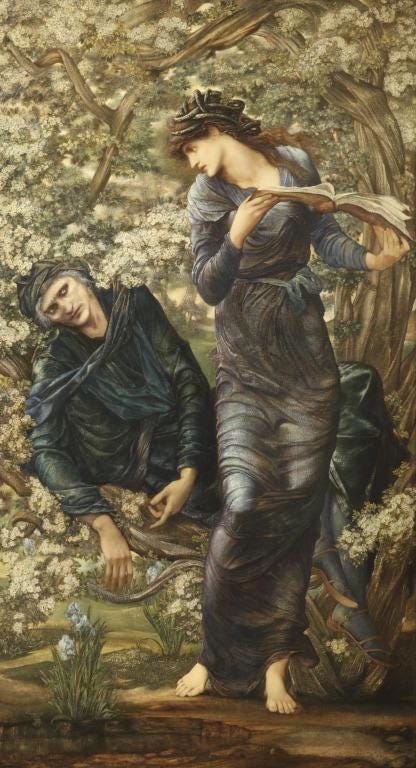
I could keep sharing hawthorn folklore forever but I am incredibly hungover and writing all that stuff about trimethylamine and bodily fluids earlier almost pushed me over the edge, so I think I will leave it there…
Go and visit your local hawthorn and pay some respect to the fairies, yeah?
Sources and Further Reading
Telling the Seasons by Martin Maudsley
Hawthorn Notebook by Robin Harford
The Forager’s Calendar by John Wright
Homecoming by Melissa Harrison
Wildlife Trusts: Common Hawthorn
Foraging Course Company: Sex, Death and Hawthorn
Weald & Downland Living Museum: May Traditions - From Fires to Fairies
The Blindboy Podcast: Fairy Forts, Anthrax, Dubai Chocolate bars and Seagulls are all intimately connected and flow as one in the cognitive ether
Sounds of Sirius: The Fairy Tree That Moved a Motorway
Also in season…
Nature Notebook: Beltane Blessings
Somehow it appears to be May. I know it’s May because the swifts have reappeared. My tomato plants are starting to look like actual plants and not just puny little seedlings. The nettles at the allotment have suddenly shot up (I feel another cake coming on). My tulips and daffs are fading, but the cow parsley is frothing and the crab apples along the la…
Important notice: Never eat something unless you’re 100% sure you can identify it correctly. Do your research and make sure it’s safe to eat, and in what quantities. In the UK, we have common law to forage the four Fs (fruit, flowers, fungi and foliage) for personal consumption, but never uproot anything without permission and only take what you need if it’s growing in abundance - leave enough for wildlife to thrive!
Disclaimer: If you buy books linked to this Substack, I may earn a tiny commission from Bookshop.org, whose fees support independent bookshops


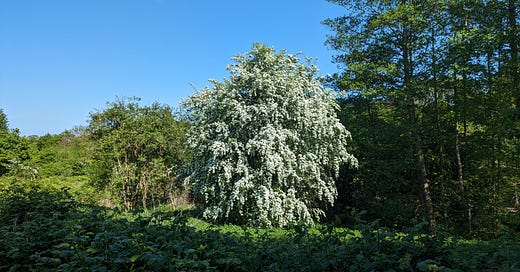


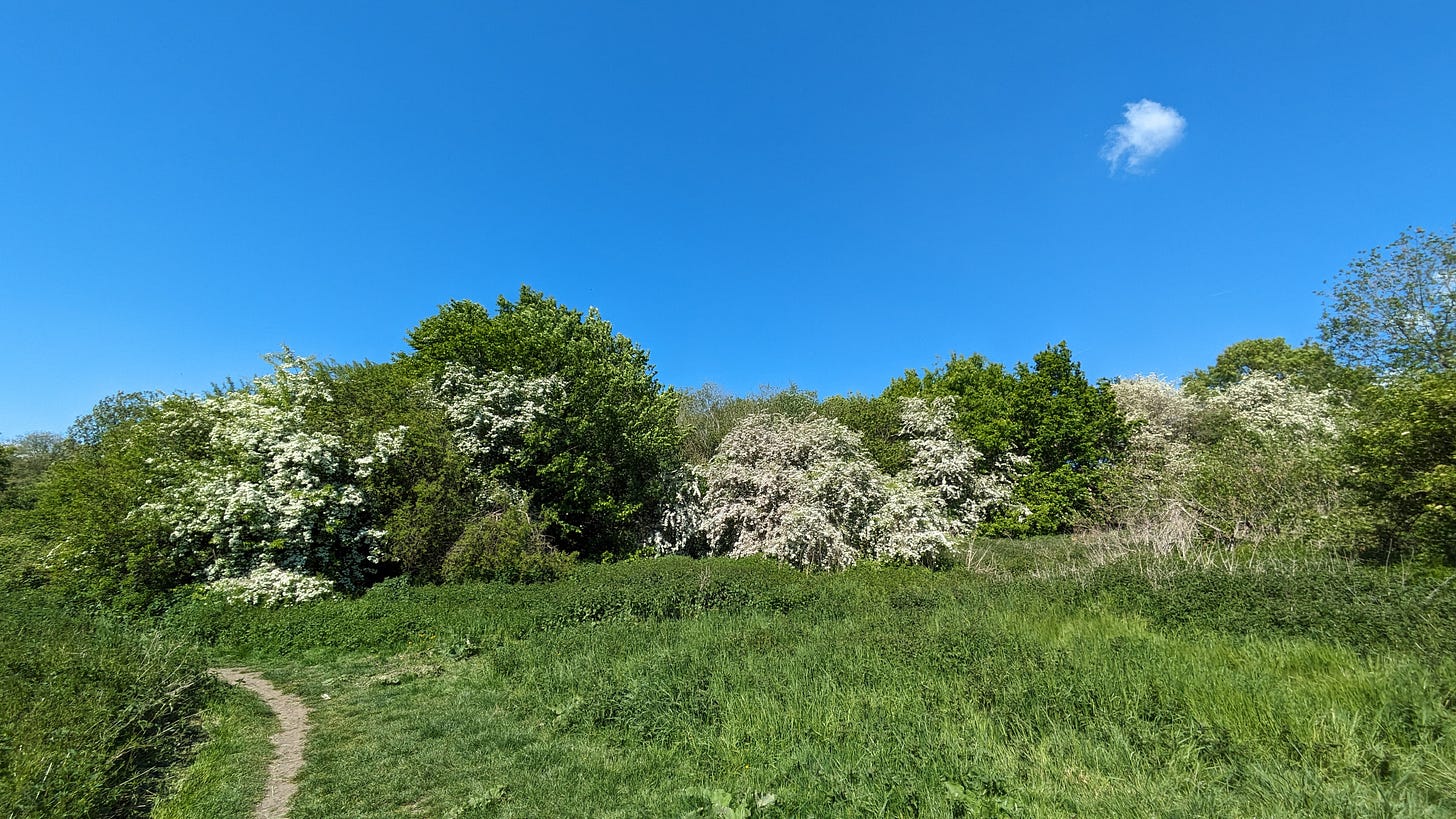
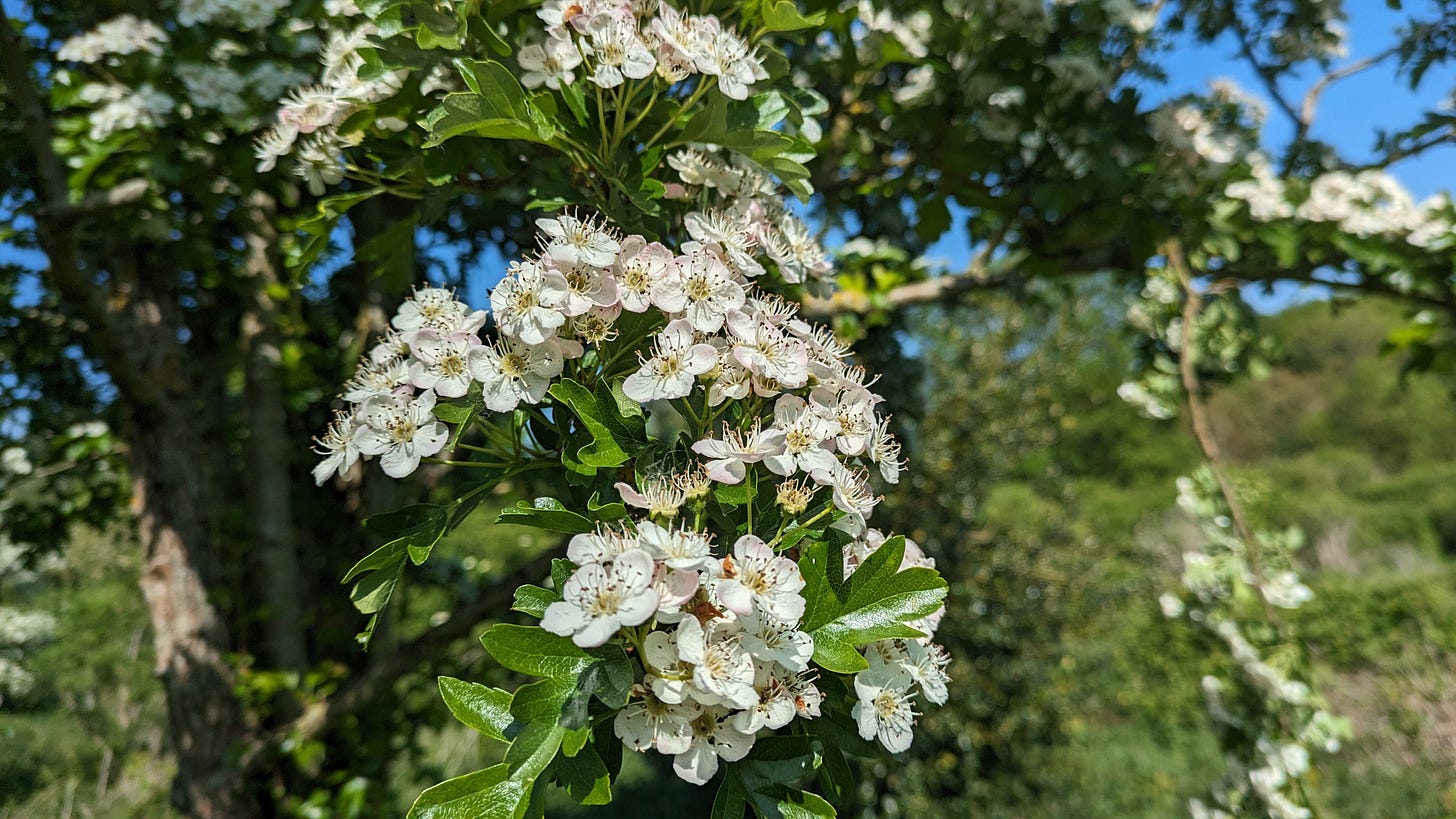
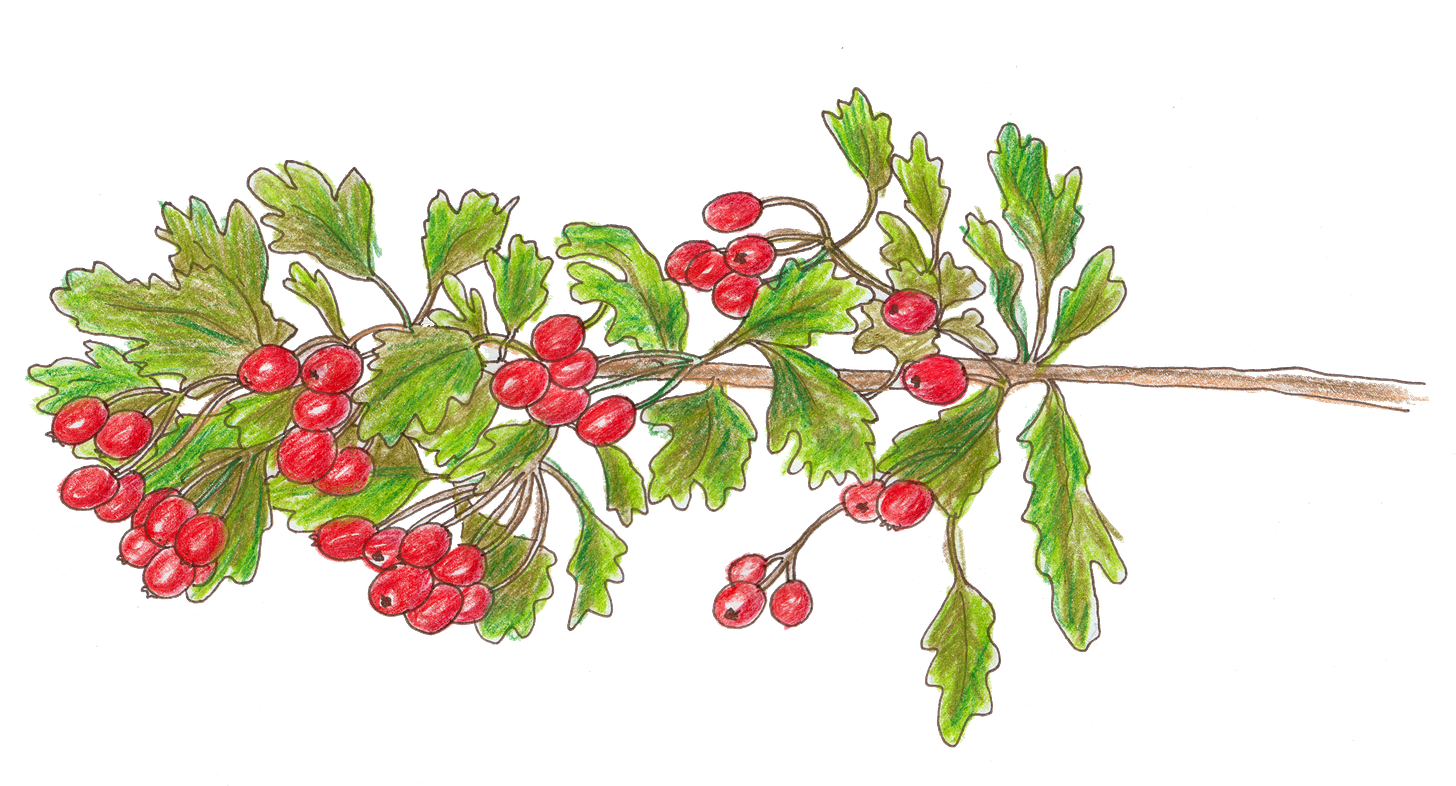

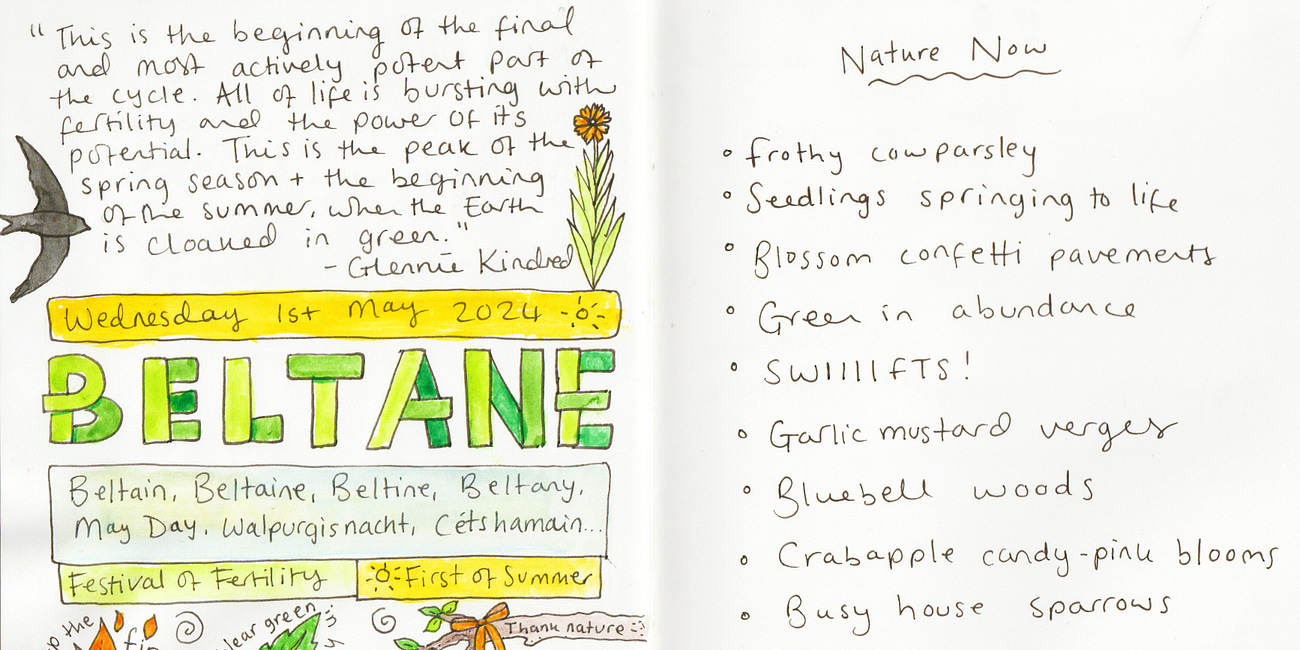
Thanks for the confirmation it smells like semen!
Oh dear. Flat coke and two paracetamol! 😆